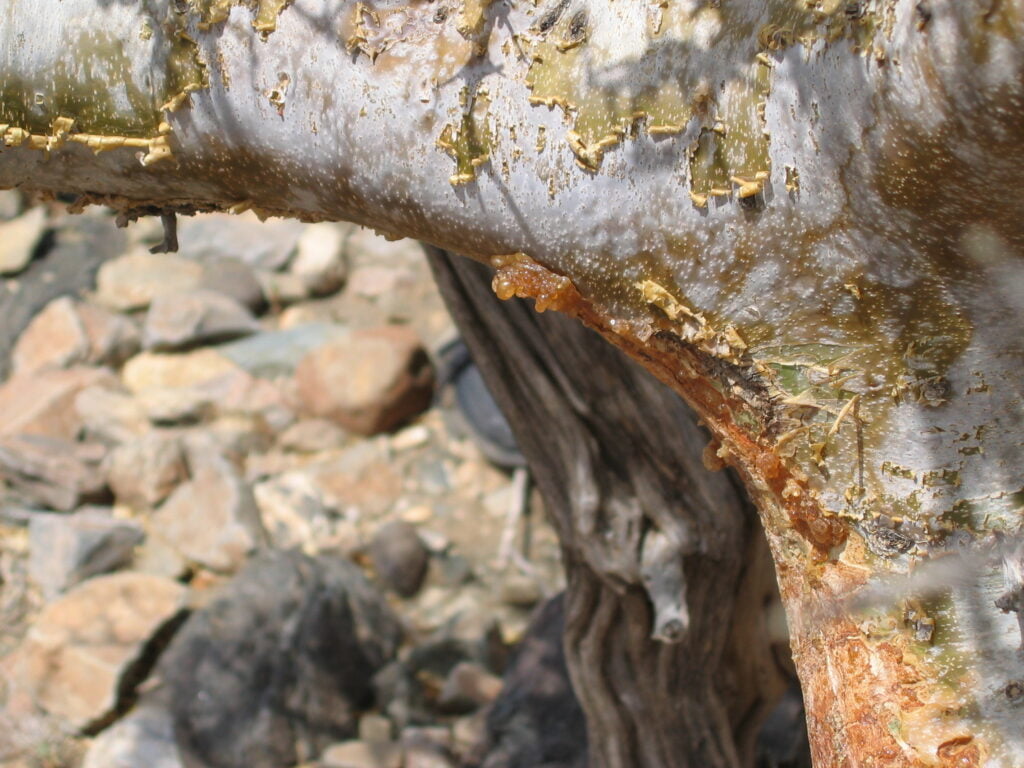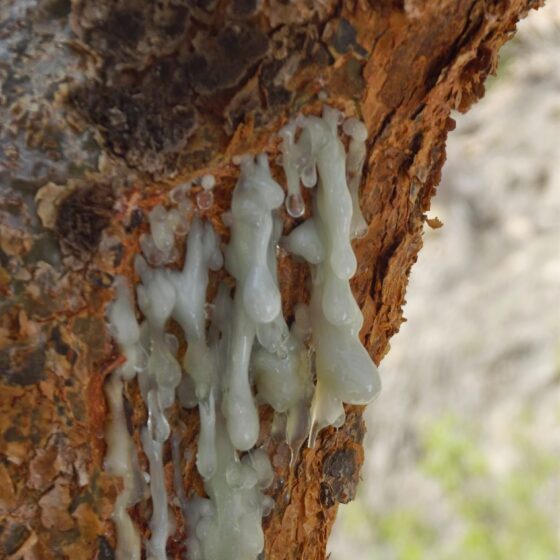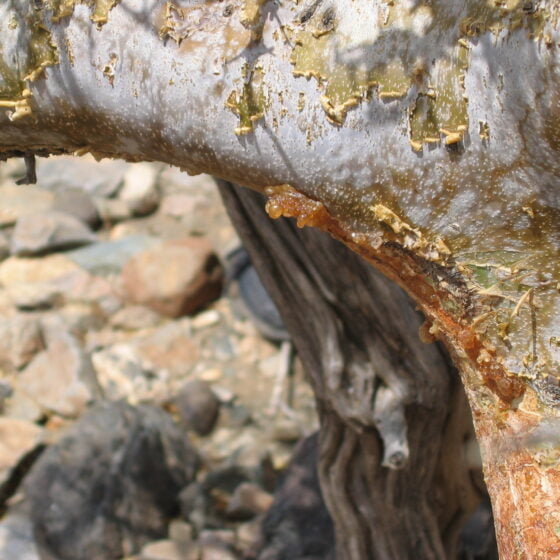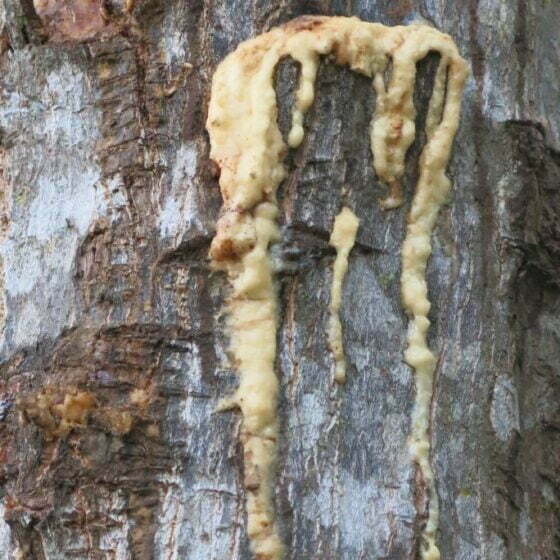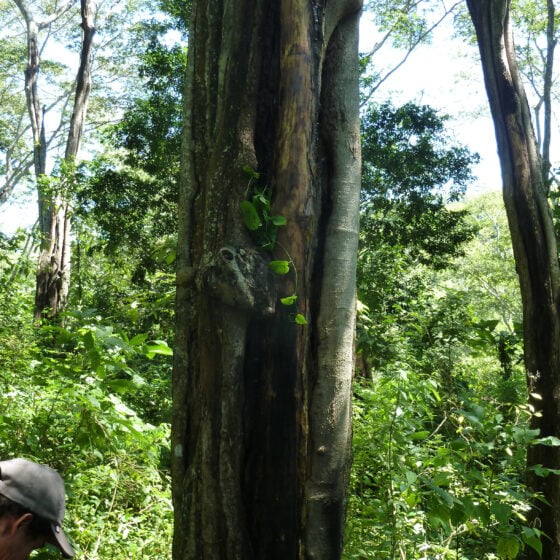
Myrrh Somalia
Commiphora myrrha
General data
Harvest Calendar
- J
- F
- M
- A
- M
- J
- J
- A
- S
- O
- N
- D
Product details Our added value
Collaboration with a local partner through a multi-year contract agreement engaging both parts on quantity and quality and ensuring fair price for the collectors.
Training in good harvesting practices provided to collectors by our partner.
Betterment of local community livelihood.
The Somalian government established the good harvesting practices to secure the durability of the resource by the yearly evaluation to supervise the frequency of tapping, the number of slits and the rotation of the trees being tapped.
No pesticides are used on the trees, the gum is certified organic.
The transformation process is carried out in our facilities in Spain.
We implement harvest to export control plans, to ensure legality of wild at-risk raw material.
Fragrance side
Brings back familiar smells of long walks in the forest during the fall season. It develops fresh mushroom facets gently evolving towards a more woody and mossy aspect. There is also a spicy saffron note with a slight metallic side, completed by small hints of liquorice.
It is generally used in the heart of orientals, as well as in liquorice accords. It is a perfect complement to woody notes.
Well-being side
Antioxidant, regenerating and skin tonic, this essential oil will also comfort the body after the effort. Sacred oil, of the great and small mourning of life, allows to move forward leaving behind any emotional and spiritual desert.
*The aromatherapy properties in this document are excerpted from reference books, scientific articles, or specialized websites and are provided to customer for its information and internal use only. Claims on a finished product remain the responsibility of the company making the finished product available on the market. About
Commiphora myrrha is a robust shrub that grows in the arid and desert regions of northern and eastern Africa, being found mainly in Somalia. The branches are covered with long thorns and, in the rainy season, large, bottlegreen leaves.
According to Greek mythology, this resin was named for Myrrha, the daughter of the King of Cyprus. Enamored of her own father, but ashamed of this love, the young woman begged the gods to banish her from the world of the living and the dead. The gods thus turned her into a myrrh tree; the gumresin the plant exudes is said to be her tears.
In Somalia, tapping takes place during the dry season, the trees’ vegetative period, when they no longer have leaves. Once the tree is incised, the collectors allow the tree to exude its resin for 10 to 15 days, coming to harvest it two to three weeks later. The trees are then recut for another exudation.
Once harvested, the gums are manually sorted by size and color and left to dry for 12 weeks.
Our added value
Collaboration with a local partner through a multi-year contract agreement engaging both parts on quantity and quality and ensuring fair price for the collectors.
Training in good harvesting practices provided to collectors by our partner.
Betterment of local community livelihood.
The Somalian government established the good harvesting practices to secure the durability of the resource by the yearly evaluation to supervise the frequency of tapping, the number of slits and the rotation of the trees being tapped.
No pesticides are used on the trees, the gum is certified organic.
The transformation process is carried out in our facilities in Spain.
We implement harvest to export control plans, to ensure legality of wild at-risk raw material.
Fragrance side
Brings back familiar smells of long walks in the forest during the fall season. It develops fresh mushroom facets gently evolving towards a more woody and mossy aspect. There is also a spicy saffron note with a slight metallic side, completed by small hints of liquorice.
It is generally used in the heart of orientals, as well as in liquorice accords. It is a perfect complement to woody notes.
Well-being side
Antioxidant, regenerating and skin tonic, this essential oil will also comfort the body after the effort. Sacred oil, of the great and small mourning of life, allows to move forward leaving behind any emotional and spiritual desert.
About
Commiphora myrrha is a robust shrub that grows in the arid and desert regions of northern and eastern Africa, being found mainly in Somalia. The branches are covered with long thorns and, in the rainy season, large, bottlegreen leaves.
According to Greek mythology, this resin was named for Myrrha, the daughter of the King of Cyprus. Enamored of her own father, but ashamed of this love, the young woman begged the gods to banish her from the world of the living and the dead. The gods thus turned her into a myrrh tree; the gumresin the plant exudes is said to be her tears.
In Somalia, tapping takes place during the dry season, the trees’ vegetative period, when they no longer have leaves. Once the tree is incised, the collectors allow the tree to exude its resin for 10 to 15 days, coming to harvest it two to three weeks later. The trees are then recut for another exudation.
Once harvested, the gums are manually sorted by size and color and left to dry for 12 weeks.
Other type of extracts
(Balsamic)
